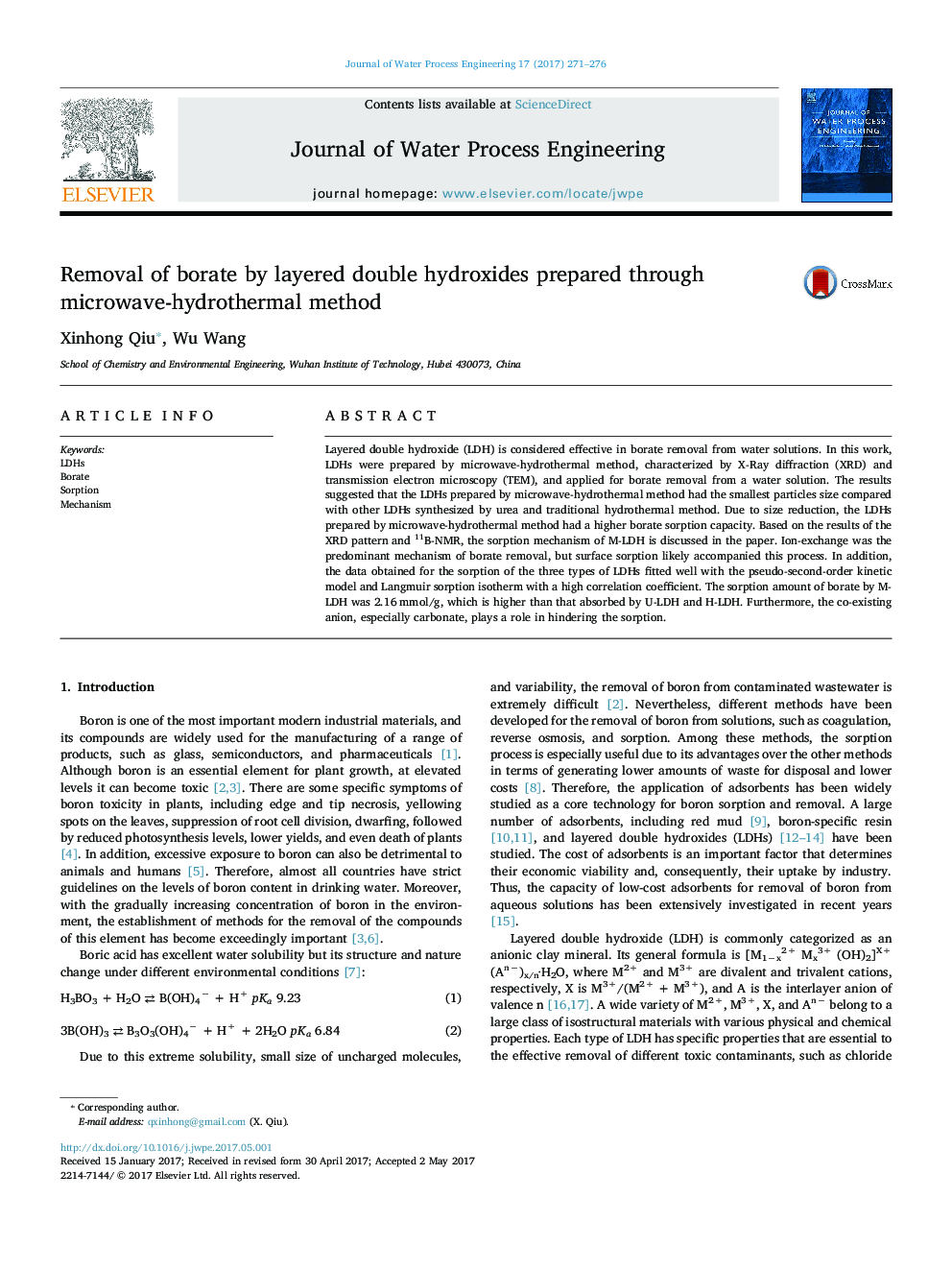| Article ID | Journal | Published Year | Pages | File Type |
|---|---|---|---|---|
| 4909933 | Journal of Water Process Engineering | 2017 | 6 Pages |
Abstract
Layered double hydroxide (LDH) is considered effective in borate removal from water solutions. In this work, LDHs were prepared by microwave-hydrothermal method, characterized by X-Ray diffraction (XRD) and transmission electron microscopy (TEM), and applied for borate removal from a water solution. The results suggested that the LDHs prepared by microwave-hydrothermal method had the smallest particles size compared with other LDHs synthesized by urea and traditional hydrothermal method. Due to size reduction, the LDHs prepared by microwave-hydrothermal method had a higher borate sorption capacity. Based on the results of the XRD pattern and 11B-NMR, the sorption mechanism of M-LDH is discussed in the paper. Ion-exchange was the predominant mechanism of borate removal, but surface sorption likely accompanied this process. In addition, the data obtained for the sorption of the three types of LDHs fitted well with the pseudo-second-order kinetic model and Langmuir sorption isotherm with a high correlation coefficient. The sorption amount of borate by M-LDH was 2.16Â mmol/g, which is higher than that absorbed by U-LDH and H-LDH. Furthermore, the co-existing anion, especially carbonate, plays a role in hindering the sorption.
Related Topics
Physical Sciences and Engineering
Chemical Engineering
Chemical Engineering (General)
Authors
Xinhong Qiu, Wu Wang,
